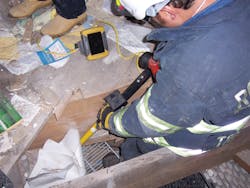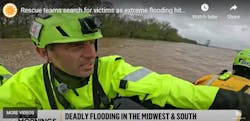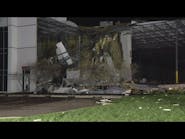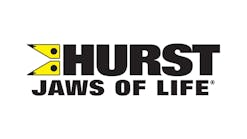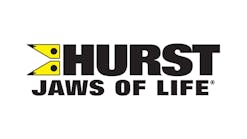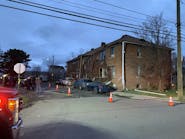With today’s growing demands on all emergency responders, being prepared for the low-frequency incident is becoming more and more challenging. Shrinking budgets and fewer grants make meeting these demands even tougher. Before jumping into setting up a team or specialty unit to respond to technical rescue incidents, you should do a thorough “needs analysis.”
A number of agencies around the country jumped on the “technical rescue team” bandwagon during the post-9/11 era. That was a time when money was being thrown at us by the bucketful as the country felt a strong need to prepare for the next event of that nature. Unfortunately, many of those departments have equipment sitting in stations and not being used today because the funds are no longer available to maintain these programs and keep their members trained.
The creation of a technical rescue team and the sustainment of that team can be possible as long as you do your homework and put the hours of preparation into the project that is required. Start out by asking yourselves a series of tough questions that will end up being your blueprint for success.
Considerations for Developing a Team
Is a team needed? Risk assessments are great tools to help you justify whether the need for a specialized team does in fact exist. It will also be of value in future phases of your development as it will provide those who may be funding the project with the justifications for those expenses. Your assessments should include your immediate community and the region around you.
What type of team is needed? In some cases, a single specialty such as a rope-rescue team will meet the needs of the community. In other cases, a multi-discipline response team may be the best answer to local and regional needs. The most common and recognized specialized teams of the multi-discipline type are the urban search and rescue (USAR) teams.
Is there a commitment from the emergency response community? Do you have leadership in place to manage the team? If the needed leadership is not already in place, will the agencies that govern your local operations support the addition of this team to their existing operations?
Training is also a major component of any specialized response team. Do you have the local infrastructure to support the required training for the team members? If these facilities are not locally available, where are they in your region and are they available for your people to use? If you plan to train locally, you must determine how many instructors you have or need to be successful and whether you have the equipment needed for these training courses.
What is the cost of a team? This will be the number-one question you will hear from many people when you decide to start a specialized rescue team. Many levels of a cost analysis must be addressed.
Start-up cost is the one most people think of first. You will have costs associated with personnel protective equipment, response and training equipment, administrative materials and the list goes on. Then there is the cost of the initial training that you will face. In some cases, you will have people already prepared to step in and begin the desired activities.
However, training must be a part of you perpetual cost analysis as new members will be coming in who need training and seasoned members who must also keep their skills honed through ongoing training programs.
Sustainment costs are one of the most important parts of a new team. If you don’t plan from day one as to how you will keep the mission moving forward financially, you will surely fail a short time down the road. The cost analysis of a team must be developed and monitored from the very first day of the process to bring a team to reality.
What funding is available? As mentioned previously, grant funds are great sources of money for a specialized team. This unfortunately is a double-edged sword when looking to sustain a team. Never look at grants as a part of your long-term sustainment plan. As fast as they arrive they can be gone. If you are questioning that potential, all you have to do is talk to anyone who was a benefactor of funds from the Urban Areas Security Initiative (UASI).
Seed money or start-up funds come in a number of forms; sometimes it is a grant, while other times it may be from a one-time budget allocation for the project. This money is a great tool in your initial start-up phase; however, “when it’s gone, it’s gone.” Use these funds properly and remember not to include them in your future financial planning.
Budgets are the most important part of your long-term success. Establish dedicated lines early in the process and work on increasing them as your operations grow.
Involve the local community that you provide services to. Many departments use back billing for services to help recover costs. This process is used very often in the hazardous materials world. Many times, these requests are processed directly with insurance companies that deal with these matters on a daily basis.
Donations of equipment can also be a way to help augment your funding needs. Never overlook any potential opportunity to bring in additional funds to your team.
Will elected officials support the concept? This one question can be the make-or-break moment in your desire to put a team in place. These individuals may be local elected officials or commissioners of a department that is looking to take this step.
A well-organized promotional presentation will be one of your best tools to gain their support. Do your homework and take the time to prepare for this moment. If you truly want your vision to become a reality, you must put the hours into preparation.
Prepare for the questions you may be asked. You can never have all the answers to every question; however, you can be ready for most of the ones you will be asked.
What laws, regulations and standards impact your project? Wanting to develop a team and being able to develop a team may be two different things. As a part of your preparation for this venture you must look into the various governing bodies that oversee our operations to make sure your plan falls in line with their guidelines. OSHA, NFPA and any local regulations that you are impacted by are but a few of the places you should spend some time researching.
Never forget to ask others too. Ask questions of your networking groups though out the emergency response community. These people may have gone through the same process you are currently involved with. What you want to do is new to you, but far from the invention of a new wheel. Someone else may have already walked in your shoes. Take advantage of that talent for your program.
What training requirements exist? The places for answers to this question are very similar to the previous questions. Most of the departments in the United States use the various NFPA standards as a guide for their training programs. NFPA 1670 outlines the basics of technical rescue response and preparedness.
By using these standards you will be accomplishing a number of objectives simultaneously. You are following the accepted standard that others currently use, which makes your team’s ability to work with other teams much easier as your basic fundamentals will be the same. Your liability will be lessened by using the accepted standard of operations. Even though NFPA standards are not laws, they are highly recognized in most communities as the way to do business.
A large part of your planning for the team will revolve around the types of specialties you plan to provide. Each specialty has its own training requirements that you will have to meet as you develop the plan for making your team a reality. A future article will go into more detail on resource typing and credentialing of your members.
Conclusion
Once you have finished gathering the answers to these questions, the real work begins. If you have compiled enough knowledge to substantiate the desire to move forward with the creation of a technical rescue team, you will now be able to begin the process of developing the team. The next article in this series will review the multiple phases of team development.
